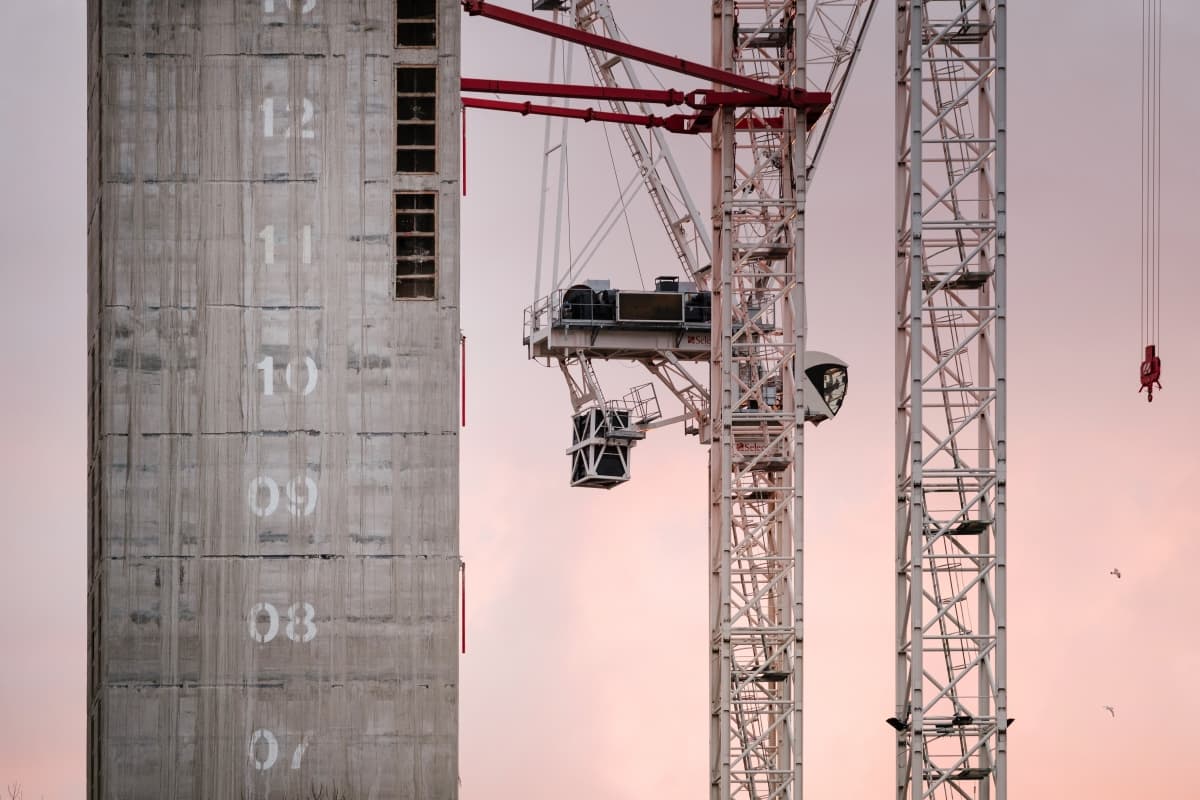Digital Transformation in construction industry
Few sectors look more ripe for disruption than construction and yet the barriers to successful digital transformation in construction industry remain high. While there are examples of cutting edge innovation, many of the established players remain risk-averse and sceptical about the investment case for adopting new technologies.

The integration of existing software and physical processes with new solutions is an acute worry, and something we’ve seen in other industries – in particular banking and, thinking further back, bricks and mortar retail. This concern is borne out by the figures – Aecom’s recent ‘Future of Infrastructure’ report found that only 56% of industry professionals considered themselves good at adopting and scaling innovative delivery. Here are four key insights into how the construction industry can truly embrace the benefits of digital transformation:
- Invest in Tech to Close the Productivity Gap
Construction’s productivity gap must surely be a catalyst for change. McKinsey’s figures show that despite being one of the largest sectors in the world, global construction productivity growth averaged just 1% a year over the past 20 years compared to 3.6% for manufacturing. Meanwhile, in the UK, the combined effect of stalled construction/infrastructure projects in 2015-16 alone was estimated to have had a £35 billion impact on investment related GDP.
When it comes to improving productivity, tech is key. Specifically, this means adopting consistent technology throughout a project. But what does this look like in practice? And how does this look across a multi-year build project? Sophisticated project management software offers cost savings, but integrating it engrained workplace culture can be problematic, which puts a premium on user-centred service design as part of a framework for delivery.
As more and more capable (and affordable) hardware comes into play Infrastructure firm Aecom is experimenting with using virtual and augmented reality solutions to offer interactive and easily accessible design models, allowing users to walk through the design of an asset in a virtual environment. This allows contractors to deliver highly accurate visualisations for consultations - such as the A303 around Stonehenge - which can lead to better decision making and improved outcomes for stakeholders. Elsewhere, there is a growing use of drones for data capture, laying cables and transporting materials on site – Aecom claims to have more drones than the US military! Alongside IoT sensors and telematics equipment, the use of digital environments to pre-assemble panels is likely to become more mainstream while automation of functions such as welding will radically alter the supply chain and increase productivity.
Built Robotics look set to make an impact on the $130 billion global excavation industry. Started by an ex-Google engineer, the robotics company has developed a fleet of autonomous earth movers that allow operators to pre-programme precise coordinates for the size of the hole that needs to be dug. Meanwhile, Artificial Intelligence (AI) will start to predict risks in the supply chain – it’s already possible to use AI to predict risk from photos. Emerging tech doesn’t just have the capability to reduce cost and boost productivity: it also has the potential to massively improve safety on site – the pioneering use of robots to assist with assembling scaffolding is a good example; manufacturers Kewazo claim the robots will help prevent accidents and long term musculoskeletal injuries caused by constant lifting. Robots are also expected to reduce onsite labour costs by 33% and reduce the time needed to assemble the scaffold by 42%. The use of some level of personal protective equipment is ubiquitous, if uneven, and there’s an opportunity to upgrade even the basics like boots and helmets with smart, connected sensors.
- We need a new approach to contracts
One year on from its high profile collapse, a key lesson the construction sector can take from Carillion is the need for a shift away from adversarial contracts which encourage self-interested negotiations and a race to the bottom on price. An adversarial approach can distort behaviour, creating an interest in exploiting problems that arise, rather than true collaboration with partners. More generally, the distrust implicit in many big, highly risk-averse contracts tends to foster micro-management rather than encourage innovation.
While there are no silver bullet solutions, the construction sector must take collective responsibility for changing the status quo. Contracts that highlight explicit achievement metrics that work for all parties is one way forward. For their part, clients have a key role to play in driving cultural and mindset changes around the formulation of contracts are drafted and implemented. There are big benefits to doing things differently. As a speaker at a recent FT Future of Construction summit put it: “Greater collaboration equals greater productivity equals greater profit.”

- Prioritise visibility, connectivity and information sharing
Supply chain visibility and information sharing are well-known problems within construction. Many clients will never get to see what happens within the project supply chain: delivering a sense of connection is possible with improved information sharing, and this can reinforce a sense of trust.
Futurice was founded in Finland, where trust and radical transparency are embedded within national work culture. It’s considered important and empowering for everyone in a company to know what is happening. Within construction, industry leaders need to drive the cultural changes that will underpin the collaboration, transparency and information sharing so key to the sector’s future.
As with the productivity gap, tech is construction’s friend in addressing this issue. Existing technology such as cloud collaboration and open data platforms can improve visibility, facilitate sharing and connecting data and generally help introduce a more integrated approach to big projects. What’s more, smarter use of open data platforms could help ensure relevant asset data is shared with key stakeholders, highlighting problems more quickly and reducing uncertainty.
Digital tools also have a role to play in bringing the right people together at the right time - such as ensuring specialist subcontractors are involved in design at an early stage to avoid designs that are unbuildable – encouraging all parties to collaborate and share both in the risks and the rewards of a project.
While a huge mindset shift is required to facilitate improved information sharing and project transparency, the gain is worth the pain. If contractors can deliver a project with greater predictability around timing and cost outcomes, clients will be more willing to take risks and innovate. This, in turn, will help construction as a sector improve productivity and fulfil its growth potential.
- If we can fix the problems, the opportunities are huge. If the construction sector can tackle the challenges to digital transformation, the opportunity is huge. McKinsey even put a figure on it – globally they estimate there is a $1.6 trillion opportunity to close the gap. Meanwhile, Mace believes that if it fixed its productivity problem, the UK construction sector could be delivering an additional £100 billion of growth to the economy.
Yes, there is a bewildering choice of tech solutions to choose from. However, our advice here at Futurice is: experiment, start small, avoid focusing too hard on the early numbers and open up to the construction tech ecosystem. Bring in innovation and data experts and allow them to hack your data and find problems worth solving. Here in the UK, there has never been a better time to experiment thanks to initiatives such as the Government’s new Construction Sector Deal, a legislative and funding package aimed at boosting productivity. The case for change is crystal clear – we just need to pull together as a sector to make it happen.
If you'd like to talk with us about the future of construction, you can get me at David.Mitchell@Futurice.com
 David MitchellChief Growth Officer
David MitchellChief Growth Officer